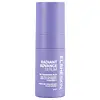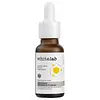What's inside
What's inside
 Key Ingredients
Key Ingredients

 Benefits
Benefits

 Concerns
Concerns

 Ingredients Side-by-side
Ingredients Side-by-side

Water
Skin ConditioningNiacinamide
SmoothingTranexamic Acid
AstringentButylene Glycol
HumectantPropanediol
SolventDipropylene Glycol
HumectantGlycerin
HumectantUndecylenoyl Phenylalanine
Skin ConditioningAlpha-Arbutin
AntioxidantArbutin
AntioxidantCitric Acid
BufferingSodium Sulfite
PreservativeAcetyl Tyrosine
Skin ConditioningSaxifraga Sarmentosa Extract
Skin ConditioningPaeonia Suffruticosa Root Extract
Skin ProtectingAminopropyl Ascorbyl Phosphate
AntioxidantScutellaria Baicalensis Root Extract
AstringentGlutathione
Sodium Palmitoyl Proline
Skin ConditioningNymphaea Alba Flower Extract
Skin ConditioningPEG-8
HumectantCaprylyl Glycol
EmollientHelianthus Annuus Seed Extract
Skin ConditioningPPG-1-PEG-9 Lauryl Glycol Ether
EmulsifyingHedera Helix Leaf Extract
Skin ConditioningPhytic Acid
Sodium Polyacrylate
AbsorbentDipeptide Diaminobutyroyl Benzylamide Diacetate
Skin ConditioningLactic Acid
BufferingPolyacrylamide
C13-14 Isoparaffin
EmollientLaureth-7
EmulsifyingHydroxyethyl Acrylate/Sodium Acryloyldimethyl Taurate Copolymer
Emulsion StabilisingHexapeptide-2
BleachingKojic Acid
AntioxidantAcetyl Glucosamine
Skin ConditioningArisaema Amurense Extract
Skin ConditioningDecyl Glucoside
Cleansing1,2-Hexanediol
Skin ConditioningPhenylethyl Resorcinol
AntioxidantEthylhexylglycerin
Skin ConditioningFarnesol
PerfumingLinalool
PerfumingAllantoin
Skin ConditioningDisodium EDTA
Glycyrrhiza Glabra Root Extract
BleachingSodium Bisulfite
AntioxidantSodium Metabisulfite
AntioxidantWater, Niacinamide, Tranexamic Acid, Butylene Glycol, Propanediol, Dipropylene Glycol, Glycerin, Undecylenoyl Phenylalanine, Alpha-Arbutin, Arbutin, Citric Acid, Sodium Sulfite, Acetyl Tyrosine, Saxifraga Sarmentosa Extract, Paeonia Suffruticosa Root Extract, Aminopropyl Ascorbyl Phosphate, Scutellaria Baicalensis Root Extract, Glutathione, Sodium Palmitoyl Proline, Nymphaea Alba Flower Extract, PEG-8, Caprylyl Glycol, Helianthus Annuus Seed Extract, PPG-1-PEG-9 Lauryl Glycol Ether, Hedera Helix Leaf Extract, Phytic Acid, Sodium Polyacrylate, Dipeptide Diaminobutyroyl Benzylamide Diacetate, Lactic Acid, Polyacrylamide, C13-14 Isoparaffin, Laureth-7, Hydroxyethyl Acrylate/Sodium Acryloyldimethyl Taurate Copolymer, Hexapeptide-2, Kojic Acid, Acetyl Glucosamine, Arisaema Amurense Extract, Decyl Glucoside, 1,2-Hexanediol, Phenylethyl Resorcinol, Ethylhexylglycerin, Farnesol, Linalool, Allantoin, Disodium EDTA, Glycyrrhiza Glabra Root Extract, Sodium Bisulfite, Sodium Metabisulfite
Water
Skin ConditioningMethylpropanediol
SolventTranexamic Acid 3%
AstringentGlycerin
HumectantAlpha-Arbutin 2%
AntioxidantPanthenol
Skin ConditioningAllantoin
Skin ConditioningCentella Asiatica Extract
CleansingGlycyrrhiza Glabra Root Extract
BleachingSoluble Collagen
HumectantGlycine Soja Oil
EmollientSqualane
EmollientHydrogenated Lecithin
EmulsifyingHyaluronic Acid
HumectantHydrolyzed Hyaluronic Acid
HumectantHydrolyzed Sodium Hyaluronate
Skin ConditioningHydroxypropyltrimonium Hyaluronate
Potassium Hyaluronate
Skin ConditioningSodium Acetylated Hyaluronate
HumectantSodium Hyaluronate Crosspolymer
HumectantSodium Hyaluronate
HumectantTocopherol
AntioxidantAscorbyl Propyl Hyaluronate
Skin ConditioningDimethylsilanol Hyaluronate
HumectantPhenoxyethanol
PreservativeSaccharide Isomerate
HumectantPolyacrylate Crosspolymer-6
Emulsion StabilisingBis-PEG-12 Dimethicone
EmollientPropylene Glycol
HumectantPEG-40 Hydrogenated Castor Oil
EmulsifyingHydroxyphenoxy Propionic Acid
Skin ConditioningCitric Acid
BufferingDipotassium Glycyrrhizate
HumectantTetrasodium EDTA
Ethylhexylglycerin
Skin ConditioningPolyglyceryl-10 Oleate
Skin ConditioningSodium Citrate
BufferingSodium Benzoate
MaskingPentylene Glycol
Skin ConditioningPotassium Sorbate
PreservativeCI 17200
Cosmetic ColorantCI 77266
Cosmetic ColorantCI 18965
Cosmetic ColorantParfum
MaskingWater, Methylpropanediol, Tranexamic Acid 3%, Glycerin, Alpha-Arbutin 2%, Panthenol, Allantoin, Centella Asiatica Extract, Glycyrrhiza Glabra Root Extract, Soluble Collagen, Glycine Soja Oil, Squalane, Hydrogenated Lecithin, Hyaluronic Acid, Hydrolyzed Hyaluronic Acid, Hydrolyzed Sodium Hyaluronate, Hydroxypropyltrimonium Hyaluronate, Potassium Hyaluronate, Sodium Acetylated Hyaluronate, Sodium Hyaluronate Crosspolymer, Sodium Hyaluronate, Tocopherol, Ascorbyl Propyl Hyaluronate, Dimethylsilanol Hyaluronate, Phenoxyethanol, Saccharide Isomerate, Polyacrylate Crosspolymer-6, Bis-PEG-12 Dimethicone, Propylene Glycol, PEG-40 Hydrogenated Castor Oil, Hydroxyphenoxy Propionic Acid, Citric Acid, Dipotassium Glycyrrhizate, Tetrasodium EDTA, Ethylhexylglycerin, Polyglyceryl-10 Oleate, Sodium Citrate, Sodium Benzoate, Pentylene Glycol, Potassium Sorbate, CI 17200, CI 77266, CI 18965, Parfum
Ingredients Explained
These ingredients are found in both products.
Ingredients higher up in an ingredient list are typically present in a larger amount.
Allantoin is a soothing ingredient known for its protective and moisturizingg properties. Because of this, it is often added to products with strong active ingredients.
Studies show higher concentrations of this ingredient can promote wound healing.
Though it can be derived from the comfrey plant, allantoin is produced synthetically for cosmetic products to ensure purity.
Learn more about AllantoinAlpha-Arbutin is made from hydroquinone and glucose. It may also be derived from the fermentation of soybeans.
This ingredient an antioxidant, meaning it helps protect your skin cells against damage.
Studies show this ingredient helps improve hyperpigmentation and fade discoloration.
Alpha-Arbutin may be used with other ingredients that help with hyperpigmentation. These ingredients include retinol, Vitamin C, niacinamide, and tranexamic acid.
Learn more about Alpha-ArbutinCitric Acid is an alpha hydroxy acid (AHA) naturally found in citrus fruits like oranges, lemons, and limes.
Like other AHAs, citric acid can exfoliate skin by breaking down the bonds that hold dead skin cells together. This helps reveal smoother and brighter skin underneath.
However, this exfoliating effect only happens at high concentrations (20%) which can be hard to find in cosmetic products.
Due to this, citric acid is usually included in small amounts as a pH adjuster. This helps keep products slightly more acidic and compatible with skin's natural pH.
In skincare formulas, citric acid can:
While it can provide some skin benefits, research shows lactic acid and glycolic acid are generally more effective and less irritating exfoliants.
Most citric acid used in skincare today is made by fermenting sugars (usually from molasses). This synthetic version is identical to the natural citrus form but easier to stabilize and use in formulations.
Read more about some other popular AHA's here:
Learn more about Citric AcidEthylhexylglycerin (we can't pronounce this either) is commonly used as a preservative and skin softener. It is derived from glyceryl.
You might see Ethylhexylglycerin often paired with other preservatives such as phenoxyethanol. Ethylhexylglycerin has been found to increase the effectiveness of these other preservatives.
Glycerin is already naturally found in your skin. It helps moisturize and protect your skin.
A study from 2016 found glycerin to be more effective as a humectant than AHAs and hyaluronic acid.
As a humectant, it helps the skin stay hydrated by pulling moisture to your skin. The low molecular weight of glycerin allows it to pull moisture into the deeper layers of your skin.
Hydrated skin improves your skin barrier; Your skin barrier helps protect against irritants and bacteria.
Glycerin has also been found to have antimicrobial and antiviral properties. Due to these properties, glycerin is often used in wound and burn treatments.
In cosmetics, glycerin is usually derived from plants such as soybean or palm. However, it can also be sourced from animals, such as tallow or animal fat.
This ingredient is organic, colorless, odorless, and non-toxic.
Glycerin is the name for this ingredient in American English. British English uses Glycerol/Glycerine.
Learn more about GlycerinGlycyrrhiza Glabra Root Extract is an extract of the roots of Licorice. It has been found to have several benefits such as skin hydrating, conditioning, and soothing.
One component, glabridin, has extra potent antioxidant and soothing properties. It has also been found to block pigmentation from UVB rays in guinea pigs.
Licorice Root also contains a flavonoid. Flavonoids are a natural substance from in plants. Flavonoids also have antioxidant properties.
Another component, glycyrrhizin, has been found to have anti-inflammatory and antimicrobial benefits. This may make licorice root extract effective at treating acne. However, more research is needed to support this.
Liquiritin is one of the flavone compounds found in licorice. It has been found to help lighten skin by preventing tyrosinase from reacting with tyrosine. When the two react, protein is converted to melanin. Melanin is the substance in your body that gives your features pigmentation.
Learn more about Glycyrrhiza Glabra Root ExtractTranexamic Acid is best used for treating hyperpigmentation, discoloration, and melasma. It can also help build a stronger skin barrier.
Once applied, Tranexamic Acid starts decreasing inflammation from UV exposure. Tranexamic Acid also prevents our skin cells from meeting the pigment production cells.
Its brightening property makes it great at reducing the appearance of acne scars and marks.
Fun fact: Tranexamic Acid is also a medication used to reduce heavy bleeding.
This acid is derived from lysine, an amino acid.
Learn more about Tranexamic AcidWater. It's the most common cosmetic ingredient of all. You'll usually see it at the top of ingredient lists, meaning that it makes up the largest part of the product.
So why is it so popular? Water most often acts as a solvent - this means that it helps dissolve other ingredients into the formulation.
You'll also recognize water as that liquid we all need to stay alive. If you see this, drink a glass of water. Stay hydrated!
Learn more about Water